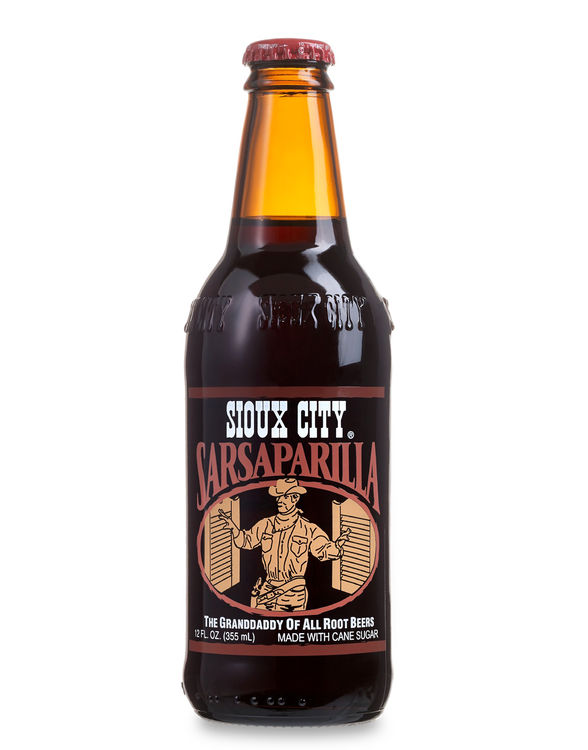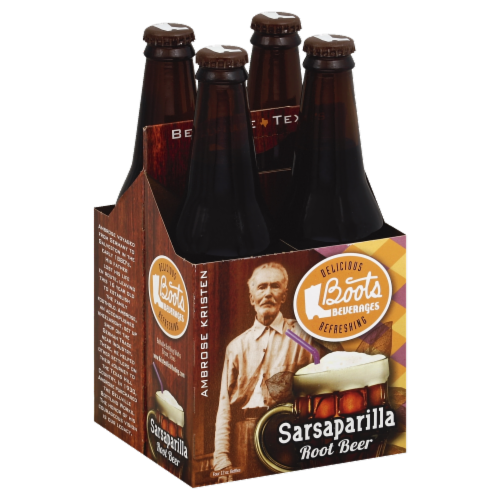The Indigenous Elixir: Unearthing the Rich History and Flavor of Native Sarsaparilla Root Beer
For generations, the deep, earthy, and subtly sweet aroma of sarsaparilla has evoked a sense of nostalgia and natural goodness. More than just a historical beverage, sarsaparilla root beer, particularly its "native" iterations, represents a fascinating intersection of indigenous knowledge, botanical bounty, and a taste of the past. This article delves into the origins, cultural significance, and enduring appeal of native sarsaparilla root beer, exploring what makes it a truly unique and cherished American beverage.
What is Sarsaparilla? A Botanical Foundation
At its heart, sarsaparilla root beer derives its distinctive flavor from the root of various species within the Smilax genus, commonly known as sarsaparilla vines. These woody, perennial vines are native to the Americas, thriving in tropical and subtropical regions, and have been utilized by indigenous peoples for centuries. The roots, when dried and processed, release a complex array of compounds that contribute to the characteristic flavor profile of sarsaparilla.
Historically, the flavor of sarsaparilla was often described as a blend of earthy, vanilla-like, and mildly bitter notes, with some variations depending on the specific Smilax species used and its geographic origin. It’s important to distinguish that the sarsaparilla used in traditional root beer is not the same as the sarsaparilla used in modern, commercially produced "root beer" flavored sodas, which often rely on artificial flavorings or a blend of other botanicals. True native sarsaparilla root beer draws its essence directly from the plant.
Indigenous Roots: A Legacy of Healing and Sustenance
The use of sarsaparilla by indigenous communities predates European colonization by millennia. Archaeological evidence and oral traditions point to its widespread cultivation and consumption. For many Native American tribes, sarsaparilla was not merely a beverage ingredient but a vital medicinal plant. Its roots were believed to possess a range of therapeutic properties, including:
- Detoxification and Blood Purification: A common belief was that sarsaparilla acted as a natural purifier of the blood, helping to cleanse the body of toxins.
- Anti-inflammatory Properties: Its sap and root decoctions were often used topically and internally to reduce inflammation and alleviate pain associated with various ailments.
- Treatment for Skin Conditions: Sarsaparilla was frequently employed to treat skin ailments such as eczema, psoriasis, and other dermatological issues.
- Diuretic Effects: The plant was also recognized for its ability to promote urination, aiding in the elimination of waste products.
- Aphrodisiac Qualities: In some traditions, sarsaparilla was also associated with boosting vitality and virility.

The preparation of sarsaparilla for consumption and medicinal purposes typically involved boiling the dried roots to extract their beneficial compounds. This decoction, often flavored with other wild ingredients, formed the basis of what would eventually evolve into sarsaparilla-flavored beverages. The knowledge of which Smilax species were most potent, how to harvest them sustainably, and the best methods for preparation were passed down through generations, forming an integral part of indigenous botanical wisdom.
The Colonial Transition: From Medicine Cabinet to Soda Fountain
With the arrival of European colonists, the medicinal and culinary uses of sarsaparilla began to be documented and adopted. Early European settlers learned about the plant’s properties from indigenous peoples and incorporated it into their own practices. Sarsaparilla gained popularity in Europe as a perceived cure for syphilis, leading to increased trade and cultivation.
In the 19th century, the burgeoning soda fountain culture in America provided a new avenue for sarsaparilla. As carbonated beverages gained traction, enterprising individuals began experimenting with various natural ingredients to create unique and appealing flavors. Sarsaparilla, with its distinctive taste and perceived health benefits, was a natural fit.
Early sarsaparilla sodas were often homemade or produced in small batches by apothecaries and confectioners. These beverages were highly prized for their authentic, natural flavor, which stood in stark contrast to the often artificial and overly sweet concoctions that would later dominate the market. The term "root beer" itself likely emerged from this era, encompassing a range of beverages flavored with various roots, barks, and herbs, with sarsaparilla being a prominent ingredient.
The Rise and Fall (and Resurgence) of True Sarsaparilla
By the early 20th century, sarsaparilla root beer was a staple in American soda fountains and homes. However, the landscape of beverage production was shifting. The development of mass production techniques, the increasing cost and availability of certain botanicals, and the rise of synthetic flavoring agents led to a gradual decline in the use of authentic sarsaparilla root.
Manufacturers began to find that other flavorings, like wintergreen or vanilla, could mimic some of the taste profiles at a lower cost and with greater consistency. Artificial sarsaparilla flavoring became more common, often containing no actual sarsaparilla at all. This led to a dilution of the original flavor and a disconnect from the plant’s natural origins.
Despite this commercial shift, a dedicated following for authentic sarsaparilla root beer persisted. Craft brewers and enthusiasts continued to seek out the genuine article, appreciating its complex, nuanced flavor and its connection to a more natural way of life. In recent decades, there has been a notable resurgence of interest in artisanal and historically inspired beverages. This has led to a renewed appreciation for true sarsaparilla root beer, with smaller producers and homebrewers bringing back the authentic taste of this indigenous elixir.
The Unique Flavor Profile of Native Sarsaparilla Root Beer
What makes native sarsaparilla root beer so special? It’s a symphony of subtle yet distinct flavors that are rarely found in modern sodas:
- Earthy Undertones: The root provides a grounding, earthy base that is both comforting and intriguing.
- Vanilla-like Sweetness: A natural, subtle sweetness reminiscent of vanilla is often present, without being cloying.
- Herbal Nuances: Depending on the Smilax species and other botanicals used, there can be hints of other herbal notes, adding complexity.
- Mild Bitterness: A very slight bitterness can balance the sweetness, contributing to a more sophisticated palate.
- Lingering Finish: The flavor often lingers on the palate, offering a satisfying and memorable experience.
Unlike many modern sodas that rely on a heavy dose of sugar and artificial flavors, true sarsaparilla root beer offers a more refined and natural sweetness. The absence of artificial additives allows the true character of the sarsaparilla root to shine through.
Making Native Sarsaparilla Root Beer at Home: A Taste of Tradition
For those seeking to experience the authentic flavor of native sarsaparilla root beer, brewing it at home is a rewarding endeavor. While obtaining genuine dried sarsaparilla root can be a quest in itself, the process allows for customization and a deep connection to the beverage’s heritage.
Here’s a basic recipe that can serve as a starting point. Remember, the exact flavor will depend on the quality and type of sarsaparilla root you can find.
Recipe: Homemade Native Sarsaparilla Root Beer
This recipe focuses on extracting flavor from real sarsaparilla root and can be adapted for both carbonated and non-carbonated versions.
Yields: Approximately 1 gallon (3.78 liters)
Prep time: 30 minutes
Brewing/Steeping time: 2-4 hours (plus chilling)
Carbonation time (if applicable): 1-2 weeks
Ingredients:
- 2-3 ounces (approx. 55-85g) dried sarsaparilla root (ensure it’s from a reputable source for culinary use)
- 1 gallon (3.78 liters) filtered water
- 1.5-2 cups (300-400g) granulated sugar (adjust to taste)
- 1/4 cup (60ml) molasses (optional, for deeper color and flavor complexity)
- 1 tablespoon vanilla extract
- 1/2 teaspoon cream of tartar (optional, helps stabilize carbonation and flavor)
- A few strips of orange or lemon peel (optional, for brightness)
- A small piece of fresh ginger (optional, for a subtle spicy note)
- Yeast (for carbonated version): 1/4 teaspoon active dry yeast or champagne yeast
Equipment:
- Large stockpot
- Fine-mesh strainer or cheesecloth
- Bottles with tight-fitting caps (swing-top bottles are ideal for homebrewing)
- Funnel
Instructions:
Part 1: Extracting the Sarsaparilla Flavor
- Prepare the Root: If your sarsaparilla root is in large pieces, you may want to break it down slightly to expose more surface area.
- Simmer the Root: In your large stockpot, combine the dried sarsaparilla root with about half of the filtered water (approximately 2 quarts or 1.9 liters).
- Bring to a Boil and Simmer: Bring the water to a gentle boil, then reduce the heat to low, cover, and let it simmer for at least 2-4 hours. The longer it simmers, the more flavor will be extracted. Keep an eye on the water level and add more if it gets too low.
- Strain the Liquid: Carefully strain the sarsaparilla liquid through a fine-mesh strainer lined with cheesecloth into a clean bowl or another pot. Discard the sarsaparilla root. You should have a concentrated sarsaparilla extract.
Part 2: Creating the Root Beer Base
- Combine Ingredients: Return the strained sarsaparilla extract to the clean stockpot. Add the remaining filtered water, granulated sugar, molasses (if using), vanilla extract, cream of tartar (if using), and any optional citrus peels or ginger.
- Dissolve Sugar: Heat the mixture over medium heat, stirring constantly, until the sugar is completely dissolved. Do not boil the mixture vigorously once the sugar is dissolved.
- Taste and Adjust: Carefully taste the mixture. Adjust the sweetness by adding more sugar if desired. You can also add a tiny pinch of salt to enhance the flavors.
- Steep (Optional): For an even deeper flavor, you can let the mixture steep with the optional aromatics (citrus peel, ginger) for another 30 minutes to an hour off the heat, covered.
- Strain Again: Strain the mixture once more to remove any remaining solids.
Part 3: Bottling and Carbonation (for Carbonated Root Beer)
- Cool the Mixture: Allow the root beer base to cool to room temperature. This is crucial if you are using yeast, as heat will kill it.
- Add Yeast: Once the base is at room temperature (around 70-80°F or 21-27°C), gently stir in the yeast.
- Bottle: Using a funnel, carefully pour the root beer base into your clean, sanitized bottles, leaving about 1-2 inches of headspace at the top.
- Cap Tightly: Seal the bottles tightly.
- Ferment: Store the bottles at room temperature in a dark place for 1-2 weeks. During this time, the yeast will consume the sugar and produce carbon dioxide, naturally carbonating the root beer.
- Check for Carbonation: After about a week, carefully "burp" one bottle by opening it slightly to check the carbonation level. If it’s fizzy enough for your liking, refrigerate all the bottles. If not, let them sit for a few more days.
- Refrigerate: Once carbonated to your preference, refrigerate the bottles. This will slow down the fermentation process and prevent over-carbonation.
For Non-Carbonated Root Beer:
- Simply omit the yeast and the carbonation process. Cool the root beer base, strain it well, and then chill it in the refrigerator. Serve over ice.
Important Notes for Homebrewing:
- Sanitation is Key: Ensure all your equipment, especially bottles, is thoroughly cleaned and sanitized to prevent unwanted bacteria from spoiling your brew.
- Bottle Pressure: Be mindful of bottle pressure. Over-fermentation can lead to exploding bottles. Regularly check the carbonation and refrigerate promptly.
- Experimentation: This recipe is a starting point. Feel free to adjust the amount of sugar, molasses, and other flavorings to suit your personal taste. You can also experiment with adding other complementary botanicals like licorice root or burdock root.
The Enduring Legacy
Native sarsaparilla root beer is more than just a beverage; it’s a connection to the past, a celebration of natural ingredients, and a testament to the enduring wisdom of indigenous peoples. Its complex flavor profile, rooted in the earth and steeped in history, offers a refreshing and authentic alternative to the mass-produced drinks of today. Whether enjoyed as a historical curiosity or a cherished homemade brew, the taste of true sarsaparilla root beer is an invitation to savor a truly indigenous elixir.


